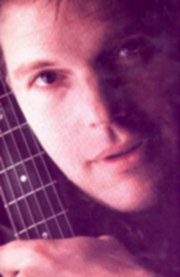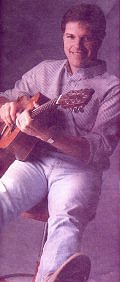Leo Kottke: Fingerstyle Visionary Learns From Tradition
by Mark Hanson
 |
"I feel like I'm finally learning what the people who have gone before me have learned," says Leo Kottke. "If I could start my career over again, I would never get involved with fingerpicks. They just plain aren't necessary."
Such a statement might seem startling from fingerstyle guitar giant Leo Kottke -- especially since he built his reputation around the searing intensity of steel picks on steel strings. But his words aren't so surprising once you hear his most recent album: A Shout Toward Noon. In the same way that Kottke's early records exulted in sheer power, the new LP unabashedly celebrates richness of tone and rhythmic integrity.
Feeling upbeat about his transition from fingerpicks and thumbpick to no picks at all -- "It's so much more fun to feel the strings," he says -- Kottke is paying closer attention to classical music masters. One dividend: A more traditional right-hand technique is allowing him greater expressiveness. Beyond that, his readings of Mozart and Beethoven, and his scale studies, are opening other new vistas. And Leo Kottke, whose name once was almost a byword for alternate tunings, today plays all but exclusively in standard tuning.
The 41-year-old Kottke first rose to prominence in the early '70s. Another fingerstyle
legend-to-be, John Fahey, gave Kottke a chance to display his technical prowess and
compositional acumen on the anthology album, John Fahey, Leo Kottke, And Peter
Lang, and on Leo's solo album 6 And 12 String Guitar. Both LPs were issued on
Fahey's influential Takoma record label. Kottke`s Takoma success led to a lengthy
association with Capitol Records, for whom he recorded five albums. Five more albums
were forthcoming on the Chrysalis label. A three-and-a-half-year recording layoff after
1983's Time Step ended when Kottke signed with his current label, Private Music (220
East 23rd St. New York, NY 10010)![]()
It was during the time away from the studio that Kottke made a quantum leap in his artistic development. Besides honing his sightreading and his musical knowledge, he put himself on a continuing program to upgrade his skills as an improviser. He also managed to effect a drastic overhaul of his technique -- a task dictated by physical ailments that could have finished the career of a less dedicated player. Kottke`s enthusiasm for his art is every bit as intense today as it was during his years as a mover and a shaker in the 70s guitar scene. The distinctive Kottke humor (which turns up both in the music and the liner notes on A Shout Toward Noon) also is as wry as ever. Our interview started on a typically improbable Kottke-esque note -- with Leo posing the opening question.
Have you ever been scuba diving?
Scuba diving? No.
It's really something else. I'm trying to line up some gigs in places where I get to scuba dive during the day. I love it.
Is diving like playing music, in any way?
 |
Yeah; they're both like flying. It's the same total involvement. You are totally immersed in it -- in the elements.
You've been immersed in several major projects over the last few years. You had a serious problem with your right hand that required a substantial change in your technique. Did the problem develop gradually?
I was halfway through a tune at a gig in Denver and suddenly my fingers wouldn't move. My whole arm froze up. It was like pushing a refrigerator across the floor. A doctor told me I had a problem with the sheathing on the tendons in my arm. It would twist funny when I tense the muscles.
Were you able to continue performing?
Yeah; but a lot of my performances that year were pretty bad. I had to really swing my whole arm to get my fingers to move. I was literally clubbing the strings with my whole arm. It was a nightmare. I really thought it was over.
What did you do to remedy it?
First I got rid of the fingerpicks. Then I got rid of the thumbpick. I realized I wasn't going to get much further wearing them. A t first my tone was anemic without them. But I learned that with good position and a lot of balance, you can generate good tone and volume without all the force I had been using. The changeover was real tough, though.
Who helped you with your change in technique?
Stanley Watson, an English classical guitar teacher who taught in Rochester, New York. He had told me shortly before that Denver gig that I was playing too hard. [British guitarist] Davey Graham was one of his students. Unfortunately, Stanley's not around any more.